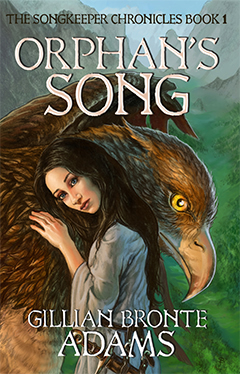Tread carefully…there be dragons about!
Today’s mythological creatures are dragons and griffins, two of the most popular mythological creatures seen in speculative fiction. Are you ready? Are you sure?
Dragon
The dragon is possibly the best-known mythological creature. They originated in early Greek myths and played a huge part in Greek mythology. A dragon named Ladon guarded the Garden of Hesperides, which may explain the origin behind the name dragon. Dragon originates from the Greek word drakonta, which means “to watch.”
Dragons exist in almost every different culture:
- Greek – the guardian of the golden apples in the Garden of Hesperides (later killed by Hercules, the dragon-hater!)
- Roman – A winged serpent breathing fire, named Draco. A constellation of stars was named after him.
- Persian – these dragons have no wings, breathe fire, eat men, and they guard desert springs.
- British – this is where dragon slaying originated. King Arthur learned about dragons from Merlin. 😉
- Norse – Apparently Loki (yes, that Loki) had offspring of dragons. Odin got mad and threw Loki’s dragon-kid into the ocean. Thor later fished it out and killed it. (Sadly, the dragon’s poison also killed Thor. Whoops.)
- German – the gold hoarding type of dragons.
- Chinese – These dragons stand for prosperity and good fortune. They usually have funny little whiskers, no wings, and are very wise and benevolent.
- Australia and New Zealand – these dragons provide rain, live near (or in) water, and are very benevolent.
Dragons have been called “the emblem of fantasy” and rarely make an appearance in science fiction novels. (Which one of you authors wants to break that trend?) The common traits of a dragon usually involve flying, spurting fire, hoarding treasure, and being very wise (even if they’re grouchy.) They are always reptilian in nature and difficult to kill because of their size and their scales.
Old cartographers used to write the Latin phrase, “Here are dragons,” on portions of maps that hadn’t been explored yet, to denote potential danger.
Books with Dragons:
- Dragonspell, and pretty much every book Donita K. Paul has ever written. 😉
- Heartless, by Anne Elisabeth Stengl
- Unbound, by J. B. Simmons
- Of the Persecuted, by Angie Brashear
- Do I even need to mention The Hobbit?
- Harry Potter, by J. K. Rowling
- Inheritance Cycle, by Christopher Paolini
- Song of Fire and Ice, by George R. R. Martin
Griffins
As if dragons weren’t interesting enough, let’s talk about the griffin.
Griffin? Griffon? Gryphon? Well…which is it?! It really doesn’t matter. The griffin is the offspring of the king of beasts (whoever that may be) and the king of birds. Similar to dragons, griffins were known for fiercely guarding their hoards of treasure. But they were also a symbol of real courage.
 Interesting facts about griffins:
Interesting facts about griffins:
- They mate for life
- They are often drawn toward fierce monsters
- Many of the treasures they guard are treasures of immortality.
- A griffin’s feather was thought to restore sight to the blind.
A griffin is characterized by the head, wings, front legs, and talons of an eagle, with a lion’s body. Oh, and in case you were wondering where a hippogriff comes into play…that’s what happens when a horse and a griffin fall in love.
Books with Griffins:
- Song of the Summer King, by Jess E. Owen
- Orphan’s Song, by Gillian Bronte Adams
- The Son of Neptune, by Rick Riordan
- The Adventures of Alice in Wonderland, by Lewis Carroll
Does your book have a dragon or griffin in it? What books have you enjoyed that do?


Great article, Nadine! I didn’t know a grypon’s feather could restore sight to the blind. Totally going to use that in my next novel…
In my Christian fantasy series The Sentinel Trilogy, one of the types of angels looks like a gryphon. I stole the idea from Revelation 4:7:
“The first living creature was like a lion, the second was like an ox, the third had a face like a man, the fourth was like a flying eagle.”
The gryphon is the one with the face of an eagle! 😀 And there are dragon-like creatures, too, but that’s in spoiler territory… ^.^
Great post! A gryphon features in my WIP and I’m happy to hear about the feathers restoring sight – nice detail!
I also live in New Zealand, and rumour has it that construction of a major motorway was diverted so a local taniwha (dragon) wouldn’t be disturbed.
Thanks for sharing about some fascinating creatures!
You forgot “The Voyage of the Dawn Treader”, in the Chronicles of Narnia series. One of the boys drinks from a spring that a dragon drank from before dying, takes a nap, and wakes up as a dragon. The others have to find a way to free him and make him human again. I haven’t read the Chronicles since the mid-1970s, so I don’t remember how they freed him. Yep, I’m old–so what? LOL!
Oh, this is so fun! I didn’t know that dragons were found in Greek mythology. It’s so interesting how dragons were seen so differently in different cultures. For example, I’m so used of dragons being fought, but it’s so interesting that in China they’re symbols of good fortune. Thanks for the article!
The Bayeux Tapestry shows a ship with a gryphon on the stern, and a dragon on the prow over two white shields with an ermine pattern. This is the ship carrying the brothers Alan Rufus and Brian of Brittany, the most famed of the many notable sons of Count Eudon Penteur.
It is said that Alan was born in 1040. In the Chinese horoscope, that was a year of the white golden dragon, the most auspicious sign of all, representing prosperity, kindness and protection.
His name is a remembrance of the ancient Alan people who came westwards from Central Asia and merged with the Bretons after the great battle of the Catalaunian Plain in the year 451.
Geoffrey of Monmouth, Geffrei Gaimar and Wace of Jersey based the personal characteristics of their King Arthur on Alan Rufus.